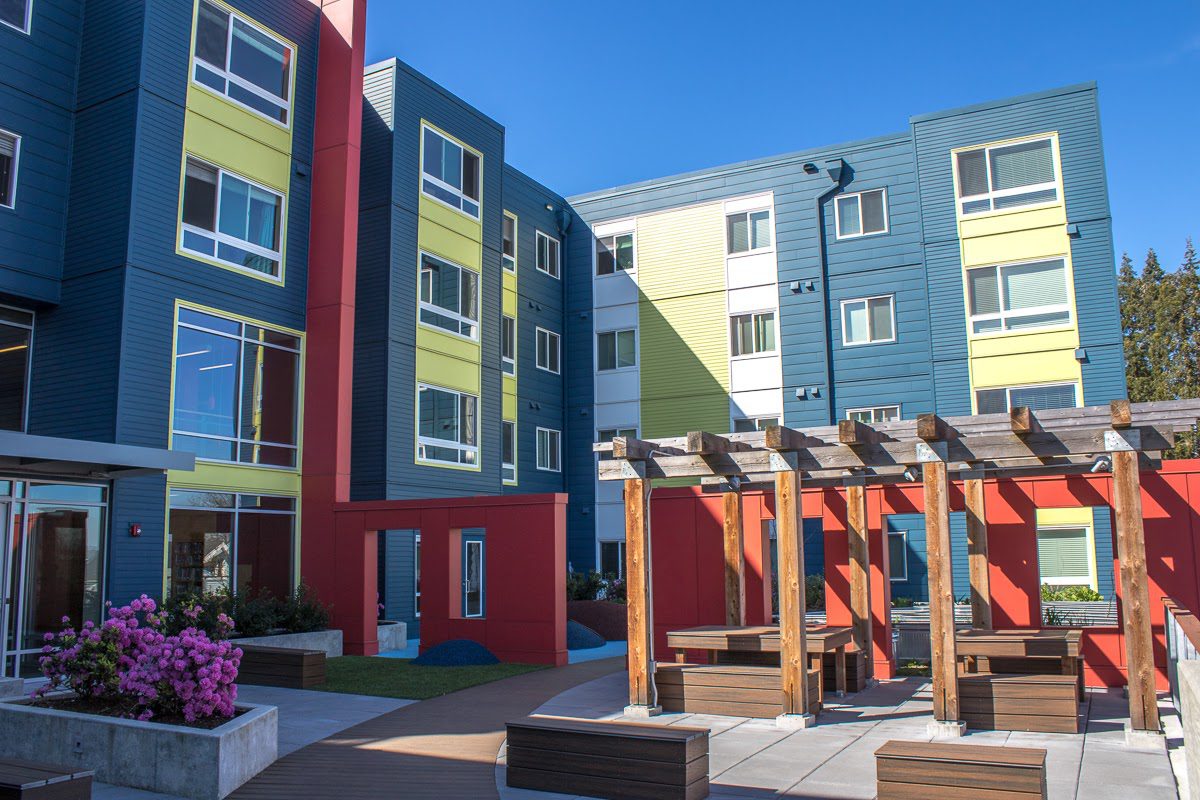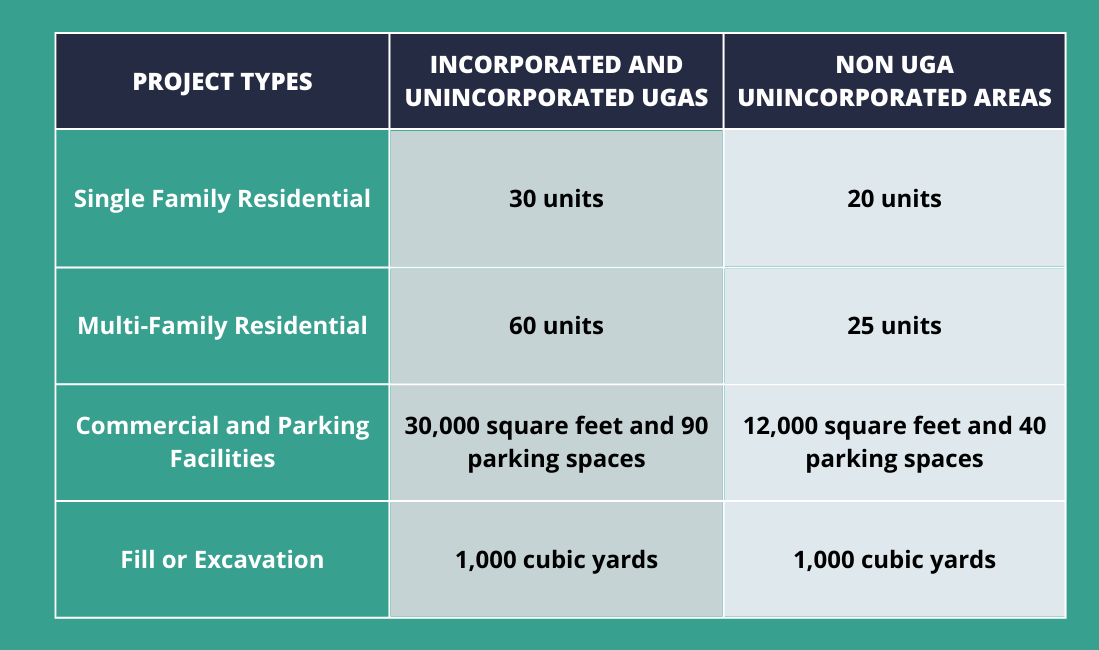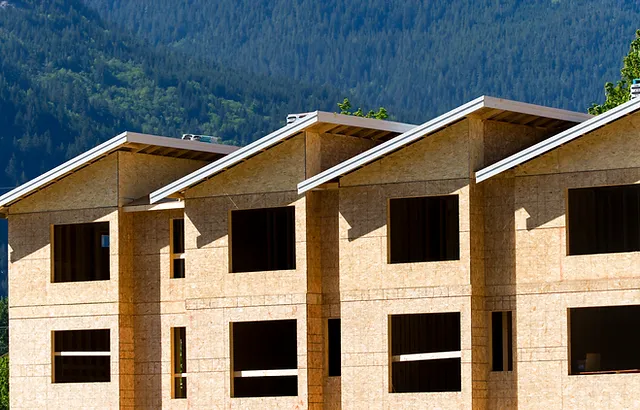
SEPA Categorical Exemptions
Background
The State Environmental Policy Act (SEPA) provides categorical exemptions to remove projects below a set threshold number of units from SEPA review (WAC 197-11-800). These flexible thresholds allow local government to adopt standards within a range that meets their community planning needs. This includes SEPA exemptions for single and multi-family development, commercial buildings, and filling and grading activities. These are often referred to as “flexible thresholds” because each jurisdiction can adopt standards within a range that meets their needs.

Flexible thresholds
Local governments fully planning under the Growth Management Act have authority to increase SEPA categorical exemptions, establishing flexible thresholds for certain minor new construction activities.

Why adopt Flexible Thresholds
The rate of housing production across our Pierce County community needs to increase significantly to keep pace with demand and avoid continued housing cost escalation due to shortages. Adopting flexible thresholds is a policy action to reduce the time and cost of new housing development – both market-rate and affordable – and reduce risk and unpredictability for developers.
Flexible thresholds were put in place for local government adoption because of a recognition that projects of a certain size or type are unlikely to cause a significant adverse environmental impact.
Typically, developments of more than four dwelling units are subject to an environmental review process under SEPA. However, jurisdictions are allowed to adopt higher exemption thresholds for single-family, multi-family and other project types, which can help to reduce permit timelines and lower development costs, eliminate duplicative processes, and encourage new urban development.
In practical terms this would mean projects under an adopted threshold would not be required to perform SEPA review or complete SEPA checklist, and there would be no requirement for the lead agency to perform a SEPA threshold determination

Implementation
To implement, local government must designate flexible thresholds through ordinance or resolution to amend their SEPA procedures. The exemptions do not apply if any portion of the proposal or decision involves lands covered by water, if a license is needed for a discharge to air or water, or if a rezone is required. To amend SEPA policies to increase the size of projects exempt from SEPA, the proposal must:
Document that the impacts to all elements of the environment have been adequately addressed.
Disclose any loss of notice and comment opportunities for future permitting decisions that will be exempt from SEPA

Resources
Department of Ecology: SEPA Guidance on Categorical Exemptions
Ordinance Example: City of Auburn: Ordinance 5908
Code Example: City of Bonney Lake Municipal Code: Chapter 16.04.080
Code Example: City of Yakima Municipal Code: Chapter 6.88.070
Existing Environmental Regulation Analysis and Impact Example: Lake Stevens Regulatory Analysis
Loss of Public Notice and Public Comment Analysis and Impact: Lake Stevens Public Comment Analysis
Ordinance Template: SEPA Categorical Exemption Ordinance Template

How can SSHA3P Assist?
SSHA3P staff are available to support members working to consider and adopt implementing SEPA categorially exemptions. Examples of this support:
Preparing a summary analysis of how existing municipal, state and federal regulations adequately address SEPA elements for newly exempt minor new construction a cities
Preparing a summary analysis on loss of public notice or public comment opportunities
Preparing presentations for planning commissions, city/town councils, and public engagement
Members are encouraged to reach out to SSHA3P staff to discuss what service and support would be beneficial in consideration of adopting or increasing SEPA Categorial Exemption flexible thresholds.
